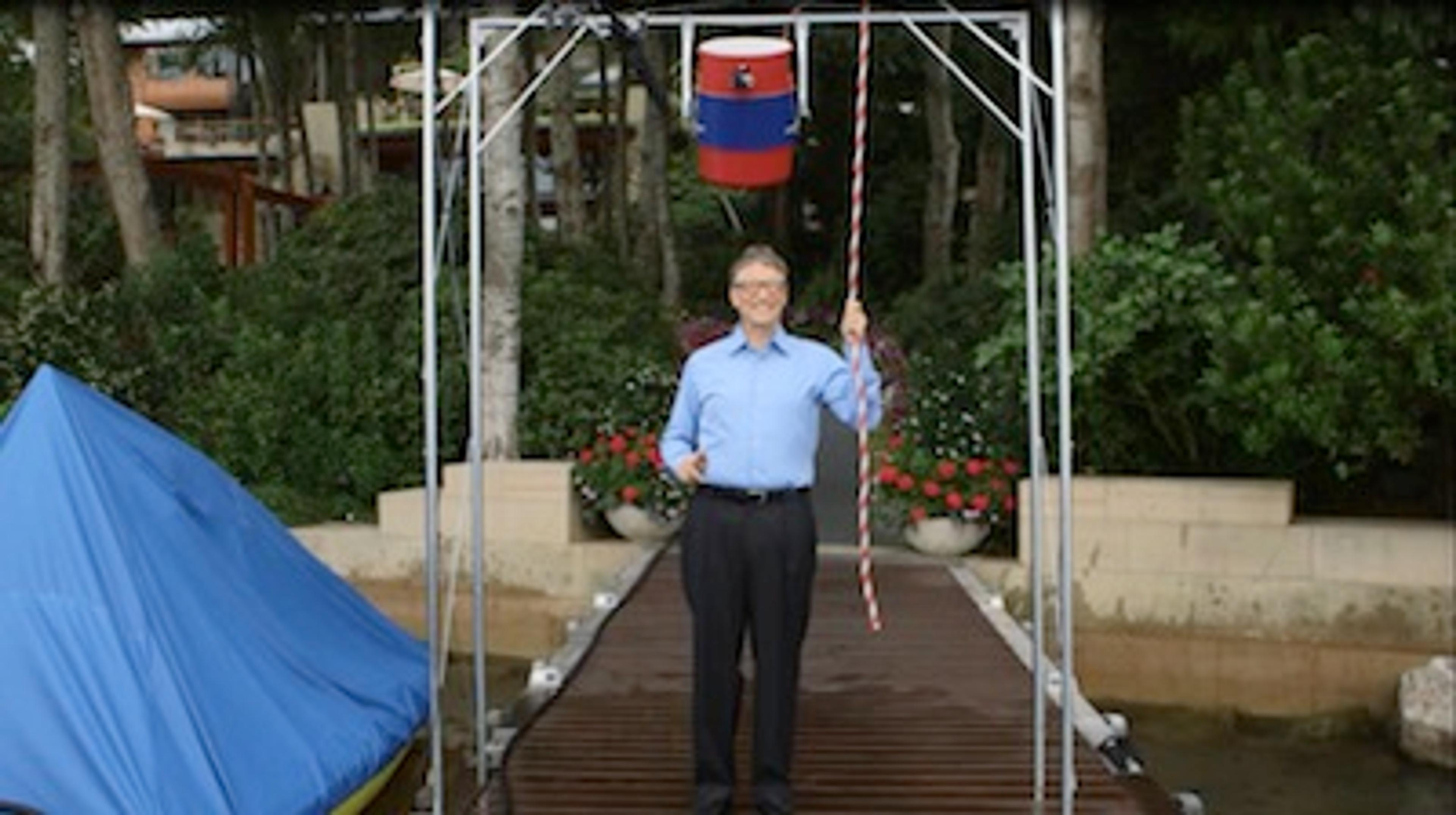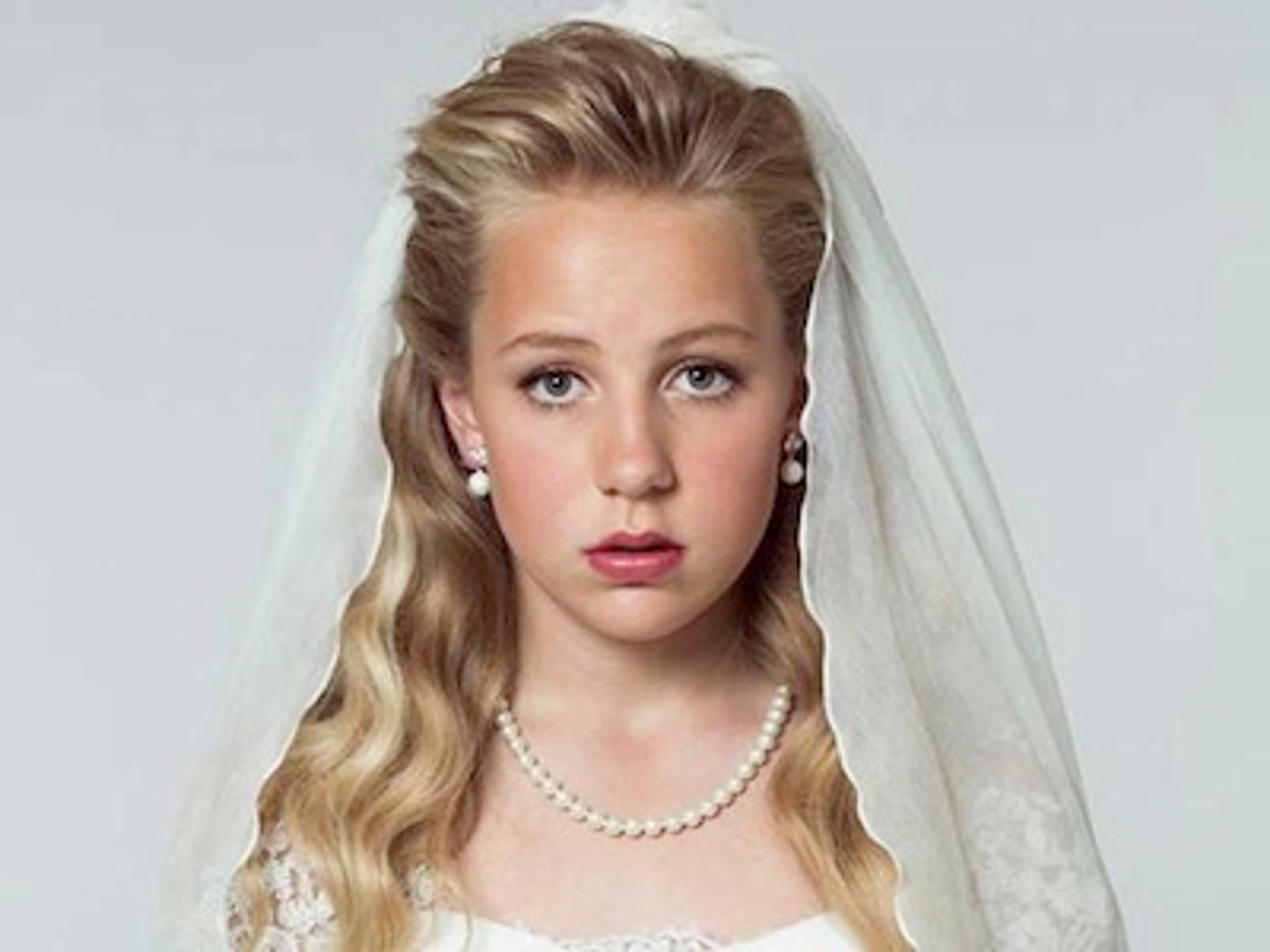2014 has seen the rise and success of many innovative and engaging campaigns encouraging people to donate to, and raising awareness of a range of charitable interventions. With mainstream charitable advertising proving lacklustre, these campaigns show social media, blogging and youtube can be used to create a huge driving force for good.
Social media campaigns
The Ice bucket challenge
By far the most successful (and surprising) campaign of the year was the ubiquitous Ice Bucket Challenge. Over an incredibly short space of time, over one million people took part, raising over $100 million for the ALS association. The premise is simple: you dump a bucket of icy water on your head in front of a camera, donate to the ALS association, and nominate friends to do the same.

Bill Gates taking the ice bucket challenge. Source: Youtube.
It is already the stuff of legend how this phenomenon actually started. However, consensus falls on it being initiated by a crowd of friends, who challenged each other publicly to donate, and filmed themselves dumping cold water on their heads as a penalty if they failed to do so. As it took off, nominees began to both donate (an amount of their choice) and dump the water. Only later did the ALS association begin its official involvement.
The way in which the ALS association can capitalise on this is to engage and sustain the commitment of the donors that came to it through the Ice Bucket Challenge. Over half of the donors were new to the organisation, and if their generosity is sustained, it would spell an even more monumental success for the ALS association in the long term.
One other way the challenge can be said to have made a meaningful difference is the public discussion it started about the worthiness of the cause raised for. Will MacAskill started this discussion with his critique of the good done by participating in the campaign, and others followed suit, even choosing other charities than ALS to give their Ice Bucket contributions to.
No makeup challenge
Another very successful challenge, with an even simpler premise. You snap a photograph of yourself with no makeup on, post it to facebook, and nominate your friends to do the same. The campaign raised £8 million for Cancer Research, and was all in all considered a great success. Again, this campaign was started between friends before being adopted by the charity they were supporting.
The #nomakeupselfie campaign was not short of criticism however. Some of the more damning remarks labelled it as promoting narcissism, as well as being inherently sexist. The Independent writes that “From superfluous ‘no filter’ reminders to boasts of being bare faced in a profile pic, the pretence these images are for anything other than an onslaught of ‘natural beauty’ acclamations, coupled with pats on the back for ‘fighting the cause’ makes the no makeup selfie mania even harder to stomach.”
Despite these misgivings, I think the biggest shortfall of the No Makeup Challenge is reflected in the fact that the campaign actually raised £18,000 for Unicef during its time. This is because both Cancer Research and Unicef used the same phone number to channel donations, and many sent the message ‘DONATE’ instead of ‘BEAT’. What this shows is that, while well meaning donations were being sent, many were giving little to no thought whether the donation was even being sent to the right place. The best thing you can do in this instance is to combine your reaction to a fundraiser with some serious thought about where your donations will have the most impact, as Tim Harford did when he took the ice bucket challenge.
Awareness campaigns
The two campaigns below are great examples of encouraging people to care about some of the world’s worst problems by putting them in a relatable context. I think it is important that we care equally about people everywhere in the world, so I find these campaigns particularly impressive.
Thea, the Norwegian child bride

Thea, the Norwegian child bride. Source: The Independent.
A simple idea became a powerful campaign against child marriage. It centred around Thea, a 12 year old Norwegian girl who was soon to be married to a 37 year old man. As she filled her blog with photos of her wedding dress, and stories of her wilting plans to one day be a vet, messages of support and horror grew in volume, and momentum grew around stopping the marriage taking place.
It transpired that the event was a sham, run by Plan Norway in order to raise awareness for actual instances of child marriage, that happen throughout the world at an alarming rate of one every two seconds. “Through Thea's blog, Plan Norway has told a story that affected 39,000 girls every single day. The blog became the biggest in Norway in less than 12 hours, and is now read by over one million people.”
You can read Thea’s wedding blog here.
In Giving What We Can’s review of child marriage, we found that it was a hugely damaging practice, and one intimately connected with harmful and unhealthy attitudes to women. It is great to see the issue being presented in a concrete and actionable way.
Syria advert
To bring the Syrian civil war home to a UK audience, Save the Children developed this powerful and saddening advert, to show the effects of civil war on a girl living in the UK. Between birthdays she loses her home and her father, and life ends up looking bleak. The video has reached over 40 million people so far, and is another great example of how an issue that seems disconnected can be communicated effectively.
Here is the video:
At Giving What We Can, our community of members is comprised of people who all care deeply and empathise with improving the lives of others around the world. When talking to others about giving more effectively, putting the needs of others in a relatable context such as this can be a great and persuasive way to present the issues.